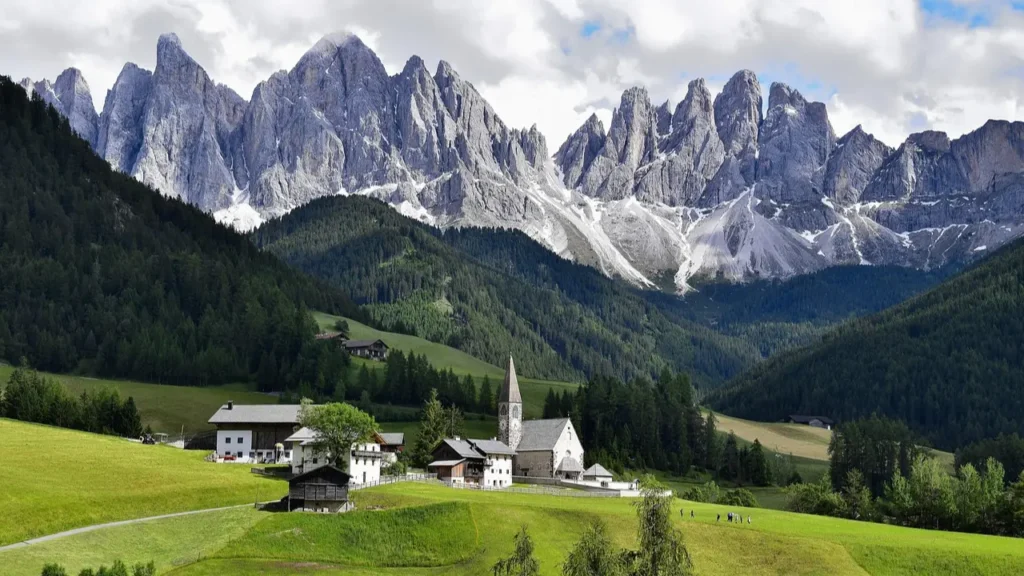Europe is a treasure trove of history, culture, and scenic landscapes, offering an unparalleled experience to travelers year-round. However, the best time to visit this diverse continent depends on various factors, including weather preferences, crowd tolerance, and specific activities you wish to indulge in. Let’s delve into the nuances of each season to help you discover the ideal time to embark on your European adventure.
Spring: March to May In Europe

Pros:
- Mild Weather: Spring brings blooming flowers, pleasant temperatures, and longer daylight hours, making it perfect for exploring outdoor attractions.
- Fewer Crowds: Compared to summer, spring generally sees fewer tourists, allowing for a more relaxed travel experience.
- Festivals and Events: Many countries celebrate spring festivals, such as Holland’s Tulip Festival or Spain’s Semana Santa (Holy Week), offering a glimpse into local traditions.
Cons:
- Unpredictable Weather: Early spring can still bring occasional rain or chilly days, so packing layers is advisable.
- Fluctuating Availability: Some tourist sites or accommodations might have limited availability or reduced hours, especially in March and early April.
Summer: June to August In Europe
Pros:
- Warm Weather: Long sunny days and warm temperatures create an ideal setting for outdoor activities and beach visits.
- Vibrant Atmosphere: Cities buzz with energy, outdoor cafes are bustling, and various events and festivals take place across Europe.
- Extended Daylight: Daylight hours are at their peak, giving you more time to explore and experience the beauty of each destination.
Cons:
- Crowds and Higher Prices: Popular tourist spots can be crowded, and prices for accommodations and flights tend to be higher during this peak season.
- Heatwaves and Tourist Congestion: In some southern regions, especially around the Mediterranean, temperatures can soar, and tourist sites may be overwhelmingly crowded.
Autumn: September to November In Europe
Pros:
- Milder Weather and Fall Foliage: September and early October offer pleasant weather and beautiful autumn foliage in many parts of Europe.
- Cultural Events: Various cultural events, wine festivals, and harvest celebrations occur during the autumn months.
- Fewer Crowds: As the summer tourist rush winds down, attractions are generally less crowded, allowing for a more tranquil experience.
Cons:
- Changeable Weather: Towards November, temperatures drop, and rain becomes more frequent, so packing layers and waterproof gear is advisable.
- Reduced Hours: Some tourist attractions or accommodations may have reduced hours or even closures as the season progresses.
Winter: December to February In Europe

Pros:
- Magical Festivities: Europe transforms into a winter wonderland with Christmas markets, festive decorations, and holiday cheer.
- Off-Peak Prices: Traveling during winter often means lower prices for accommodations and flights.
- Winter Activities: Skiing, snowboarding, and other winter sports are prevalent in countries with mountainous regions.
Cons:
- Cold Weather: Some regions experience harsh winters with snow and freezing temperatures, making outdoor exploration challenging.
- Shortened Daylight Hours: Days are shorter, limiting the time available for sightseeing and outdoor activities.
Conclusion
The best time to visit Europe varies greatly based on individual preferences and desired experiences. Spring and autumn offer a balance between favorable weather and manageable crowds, making them popular choices for many travelers. Summer attracts crowds but guarantees warm weather and an energetic atmosphere, while winter delights with festive charm and off-peak prices but requires a tolerance for colder temperatures.
Ultimately, the best time to visit Europe depends on your interests, tolerance for crowds, and the experiences you seek. Whether it’s the vibrant festivals of summer, the colorful foliage of autumn, the festive charm of winter, or the blossoming landscapes of spring, Europe welcomes travelers year-round with its rich tapestry of cultures and experiences.
As we previously mentioned, popular Paris often sees a tourist slump during the peak season months of July and August. Meanwhile, in Italy, Spain, Croatia, and the south of France, the cooler temperatures of the “shoulder season” months can cause crowds to come out in droves. The increase in tourist activity means that, while you may be expecting a decrease in crowds, you’re likely to experience peak season conditions and crowds

